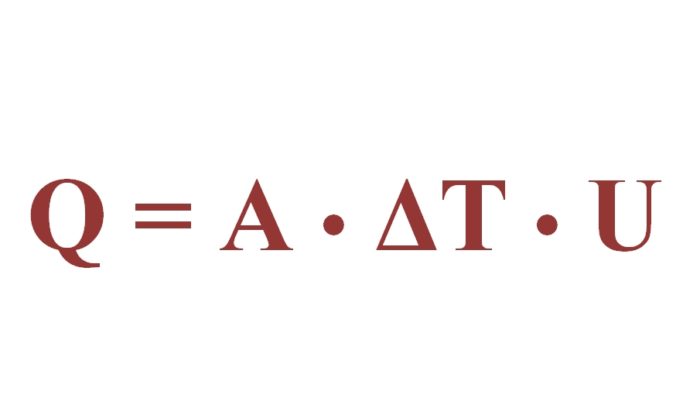
Image Credit: Martin Holladay
The familiar NFRC sticker found on most new windows sold in the U.S. includes a number in the upper left-hand box labeled “U-factor.” For many homeowners and builders, an encounter with this sticker represents their first exposure to U-factor.
Once people understand that a window has a U-factor, they might learn that walls and ceilings can have a U-factor, too. At that point, confusion may begin.
It’s U-factor, not U-value
U-factor is literally a factor — it’s part of a mathematical formula involving multiplication. (We all remember factors from the 7th grade, right?) It is part of the well-known heat loss formula used by builders to determine transmission losses through floors, roofs, and walls:
Q = A • ΔT • U
In other words, the rate of heat flow through a building assembly (in Btu/h) is equal to the area of the assembly (in ft²) times the ΔT (in F°) times the U-factor (in Btu/ft² • hr • F°).
Delta-T (ΔT) is the difference between the outdoor temperature and the indoor temperature. For example, if the outdoor temperature is 20°F and the indoor temperature is 70°F, then the delta-T is 50 F°.
In short, the U-factor was invented to make this formula work for the peculiar British (or Imperial) units we use in the U.S. It’s the number that you have to use to multiply a certain product (area times delta-T) in order to end up with a value we are interested in: Q, or the rate of heat flow in Btu/h.
The U-factor in this equation is not a constant. U-factor varies. U-factor will be relatively low for building assemblies with thick insulation (resulting in a low rate of heat flow through the assembly), and U-factor will be relatively high for building assemblies with thin insulation (resulting in…
Weekly Newsletter
Get building science and energy efficiency advice, plus special offers, in your inbox.

This article is only available to GBA Prime Members
Sign up for a free trial and get instant access to this article as well as GBA’s complete library of premium articles and construction details.
Start Free TrialAlready a member? Log in





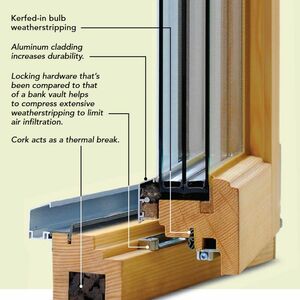
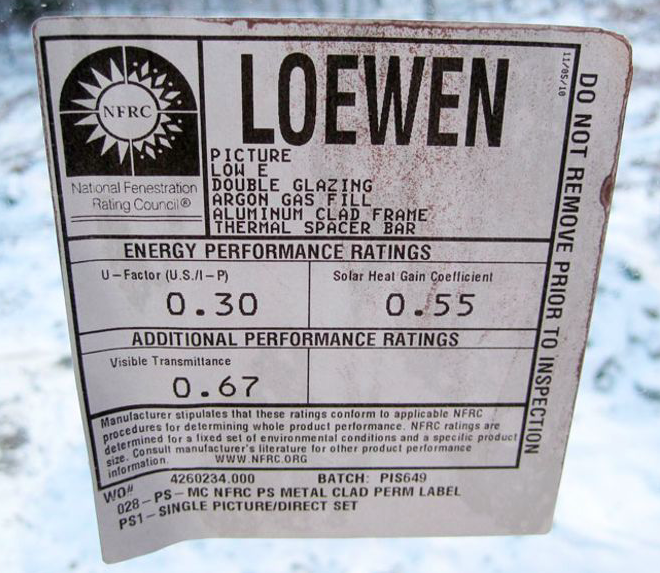
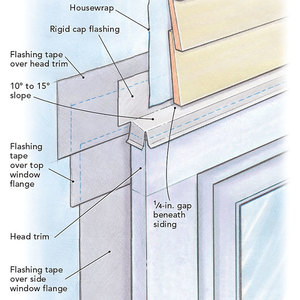
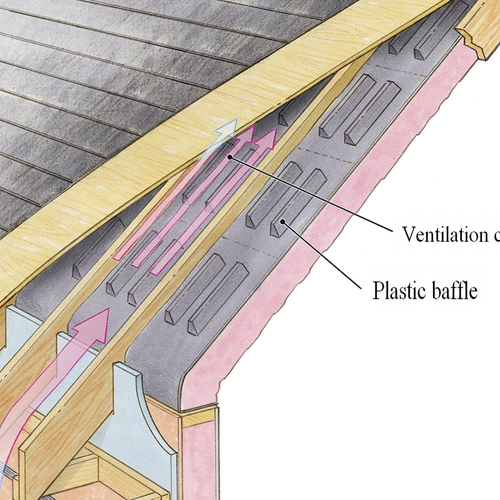






22 Comments
Martin
How many U factors make up a furlong?
The radiant component of U-factor
Helpful post. Thanks. There’s one area that deserves deeper thinking — the US v. European outdoor temperature selection. As you say, US products are tested at a colder temp than European. I’m familiar with the impacts on insulation performance and this may apply to windows as well.
U-factor has a radiant component. And the radiant flux depends not on the temperature difference, but the difference in absolute temperature to the fourth power. That means that the radiant flux at any delta T will be less at cold temperatures than at high temperature for the same delta T. Radiant flux between -10°C and 10°C is about 11% lower than the flux between 0°C and 20°C.
Insulation, for example, gets better and better as it gets colder and colder (until other, say, convective factors start kicking in) because the radiant flux is lower. An insulation product that is tested at a lower temperature on one side will look better because it gets to include the low-temperature-low-flux portion. No dummies, those ‘mericans.
Someone more versed than I will have to weigh the radiant and convective factors for windows.
-- Bill Rose
If I understood all of that
If I understood all of that correctly, one can't say for sure that a U.20 window will outperform a U.21 window - it depends on your climate.
Response to Jon R
Jon,
In any climate zone, a U-0.20 window (NFRC rated) will outperform a U-0.21 window (NFRC rated), because both windows were tested according to the same standard. The rate of heat transfer through a U-0.20 window is lower than the rate of heat transfer through a U-0.21 window.
Ideal air gap between window panes
Im interested to learn more about the ideal air gap between window panes. Im planning to use the new Cascadia (from B.C.) passive house certified fibreglass windows in a new house I'm building. They mentioned one thing they had to change to meet passive house standard was to spread the panes of glass further apart.
Im not building a passive house but would like to chose the most efficient option for my climate zone... The standard tripple glazing has a total sealed unit width of 1.6" and the passive house cert. is 1.73". Anybody have any ideas? How wide are they going in Europe?
Response to Scott Benson
Scott,
The short answer: In the U.S., the optimal gap is 1/2 inch (12.7 mm). In Europe, the optimal gap is 11/16 inch (18 mm).
That said, not all windows in the U.S. have an optimal gap. For argon-filled glazing units, the optimal space between glazing layers is 1/2 inch, resulting in a triple-glazing unit thickness of 1 3/8 to 1 1/2 inch. Because thicker glazing units can be difficult to integrate into manageable sashes, some window manufacturers promote triple glazing units as thin as 7/8 inch. Such thin-gapped glazing units perform better with krypton gas than with argon gas. However, since krypton costs more than argon, some window manufacturers only offer argon, even in their thin glazing units; caveat emptor.
It is difficult to design a double-hung or slider window that accommodates full-thickness (1 3/8" or 1 1/2") triple glazing. Many manufacturers interested in window performance prefer to stick with full-thickness triple glazing, and therefore offer triple glazing only for casement, awning, or fixed windows. Those looking for triple-glazed double-hungs often have to settle for a compromise product with thin (7/8" or 1") triple glazing. As long as builders remember to specify krypton gas, not argon, such thin glazing units can perform well.
For more information on this topic, see Presumptive European Superiority Syndrome.
Response to Bill Rose (Comment #2)
Bill,
Thanks for your comments.
I'm not qualified to comment on your point about the radiant component of U-factor. But it seems to me that the main purpose of a window U-factor rating is to permit designers and builders to compare available products. While testing at a low temperature may make "American" U-factors appear better than "European" U-factors, that issue is irrelevant to a U.S. shopper choosing among NFRC-rated windows. All the U.S. shopper wants to know is whether Window A has a higher or lower U-factor than Window B. The U.S. shopper is rarely interested in knowing whether Window A (rated by the NFRC system) has a higher or lower U-factor than Window X (rated by a lab in Germany).
Under the current system, the problems surrounding trans-Atlantic window performance comparisons is unresolvable -- unless European manufacturers choose to have their windows undergo NFRC rating, which is expensive.
Response to Bill Rose (Comment #2)
In a high-performance window, with low-e coatings on at least one surface facing each space between panes, the heat transfer between panes by radiation is much smaller than the heat transfer through the fill gas. So the temperature dependence of the U-factor is dominated by the temperature dependence of the heat transfer through the gas, and the temperature dependence of the radiation heat transfer doesn't matter much.
The radiation heat transfer between the room and the interior face of the interior pane of glass is still a factor in determining the U-value, but the temperature there doesn't very much, assuming the space is conditioned.
Optimal spacing (Scott, #5 and Martin #)
Martin answered Scott's question correctly, but his answer might be a little confusing. There are two reasons why a different gap might be optimal. One would be trying to get the best score in a particular rating system. The other would be to get the best performance in your climate. In Scott's case, the NFRC choice of temperature for the rating matches his climate well, and the 1/2" gap is a good choice with argon. But milder climates in North America, the European rating temperature would be more representative, and actual the performance would be very slightly better with larger spacing.
For readers who want to experiment with the effect of temperature and spacing between panes on U-factor, the free LBNL "Window" software is useful. https://windows.lbl.gov/software/window/window.html
But for most people, the main point is to make sure to compare apples to apples, or oranges to oranges, and not to worry too much about which system is better for their region, as Martin explains in comment #7.
U-factor vs U-value
Good overview, Martin. I'm not sure I understand the focus on the word "factor" vs. "value" though.
Either way, it's just a piece you plug into an equation. Calling it a factor is mathematically correct, in that "factor" means a part of an equation multiplied by others. "Value" is supposed to mean the result of an equation. The equation can also be written Q/(A • ΔT)=U. In that case, U is a value. In the first case, U is also a variable. Until it is replaced with a number; then it's a number.
Response to Michael Maines
Michael,
You misunderstood my point -- or perhaps I was unclear. You're right, of course, that U-factor is both a value and a number. My point concerns the name of the term -- a name that should be consistent for clarity.
Lots of specific numbers and values have names: R-value, U-factor, delta-T. Each of these should have one consistent name, so that we all know what we are talking about.
"U-factor" was well established for decades before some builders began talking about "U-value," apparently due to their familiarity with a related term, "R-value." But "U-value" is a misnomer. I'm just trying to establish consistency in naming.
Just because a lot of builders talk about "sheeting" and "EFIS" doesn't mean we should give up reminding readers that the correct terms are "sheathing" and "EIFS."
These days, most educated people refer to a temperature recorded in Europe by saying "degrees Celsius" rather than "degrees Centigrade." "Celsius" is the preferred term; the same can be said of "U-factor."
Fair enough
I'm usually the one to argue for precision in terminology, so I was mostly just stirring the pot. I am certainly guilty of using the term "U-value" regularly, without thinking about it. I'll try to stick with U-factor going forward.
Response to Jon R
Jon,
While it's true that the rated NFRC U-factor is only accurate at 0°F, the fact that the U-factor will be slightly different at colder or warmer outdoor temperatures isn't that important. No one expects weather to be constant or U-factor to be constant -- yet we still manage to design buildings, live in them, and heat them.
rated vs actual
As with insulation, it's important to note that the rated factor/value and the actual factor/value under some other conditions will be different. For example, R5 rated EPS will outperform R5.1 rated polyiso - at some temperatures. But R5.1 actual outperforms R5 actual.
Applied to windows - a U.21-rated window might outperform a U.20-rated window in your climate.
Response to Antonis Antoniou
Antonis,
It probably isn't worth arguing any further about U-value vs. U-factor. When the NFRC set up their labeling program, they debated the issue and agreed on "U-factor."
It's certainly true that when it comes to terminology and jargon, the conventions in the U.K. are often entirely different from those in the U.S.
I stand by my statement in Comment #4. If you compare two windows, both rated under the NFRC protocol, the U-0.20 will always perform better (have a lower rate of heat transfer) than the U-0.21 window.
That doesn't mean that the U-0.20 window is the best imaginable window. Nor does it mean that the U-0.20 window has been optimized for all outdoor temperatures. Nor does it mean that a European window wouldn't perform better.
Response to Martin Holladay
Martin if the below statement is correct then I don't see how you can stand by your statement in Comment #4.
Please consider the example below.
If a window A has a U-factor of 0.2 at 0F and 0.25 at 32F and a windows B has a U-factor of 0.21 at 0F and 0.24 at 32F then window B will do better than window A when used in climates that the low temperatures do not drop below 0F even though at the NFRC testing conditions windows A will outperform B.
Am I missing something?
Reply to Martin Holladay
Martin I have to disagree with you on two points.
First the terminology. The only term I have ever seen used is U-value. Granted I am not a ME, I could be wrong but my father who is a ME uses U-value and has never heard of U-factor. It could be that in the UK the terminology is different than in the US but I doubt it. Also the Merriam-Webster dictionary has the U-value listed but not U-factor so I am assuming a lot more people are familiar with that term and as an engineer I think the word value is more appropriate than factor, factor being some constant value you use to convert between units or a ratio between two other values (at least in the electrical engineering field). Anyway I think the point is moot as long as everyone understands that we are talking about thermal transmittance.
Second point of disagreement is the statement that you make in your #4 comment because it is totally contradicting what you are saying in your blog post. If an NFRC rated window has a lower U-factor than another that does not mean it will perform better under all circumstances. Case in point the European windows that are rated at 32F(0C) and are designed to work better under those conditions, conditions in which their American counterparts would not do as well even though the European windows would have higher U-values if tested under NFRC conditions.
Response to Antonis Antoniou
Antonis,
I'm talking about two windows that are both rated according to the NFRC standard. If both windows are rated by NFRC, the window that performs better at O degrees F will also perform better at 32 degrees F.
That doesn't mean that the IGU couldn't be modified to perform better at 32 degrees F -- it could, by increasing the space between the panes. But then we're talking about a different window.
You have proposed two windows that don't exist -- a unicorn and a griffin, let's say.
Response to Martin Holladay
Martin although my imaginary windows might not be real, the values that I used should have made my point. Since it was not I will try one more time.
If you take an NFRC rated window (A) and you increase the space between the panes you will get a window (B). Will the performance of window B increase at 32F compared to the original window (A)?
What about its performance at 0F? Will it decrease or increase compared to the original A?
Response to Antonis Antoniou
Antonis,
Here's my basic point: If you compare two American windows, both of which are rated by NFRC, and window A has a lower (better) U-factor than window B, their performance moves in tandem as you change the outdoor temperature. Window A will always perform better than window B, as the outdoor temperature falls or rises.
Similarly, if you compare two windows rated in Europe, and window X has a lower U-factor than window Y, window X will always perform better than window Y, as the outdoor temperature falls or rises.
The sketch below is intended to illustrate the point; I make no claim that the shape of the curve is accurate, merely that the graph illustrates my principle without deception. To the best of my knowledge, the two curves that represent American windows (the black and green curves) move in tandem, as do the two curves that represent European windows (the orange and blue curves).
The point I made in the article -- that comparing U-factors across the Atlantic is difficult -- is illustrated by the fact that the two American curves are optimized for best performance at 0°F, while the two European curves are optimized for best performance at 32°F.
Martin and Antonis
It looks like the two of you agree on what can physically happen. The only disagreement is on what range of scenarios you want to consider. Antonis is considering a scenario in which some wide-spaced windows have NFRC ratings. That could happen if a US manufacturer had that as a custom option, or if a European manufacturer got NFRC ratings for their products. So I'd have to agree with Antonis that it's possible, although I also agree with Martin that it's not common, and is not likely to be an important consideration
Given that there are many
Given that there are many design trade offs (fill, spacing, coatings, panes, frame, etc) that effect the rating, I expect (but can't prove) that two NFRC rated windows of similar rating but significantly different design would produce crossing lines.
Log in or become a member to post a comment.
Sign up Log in